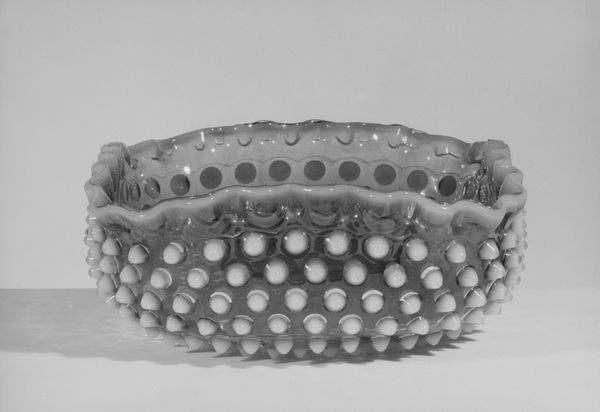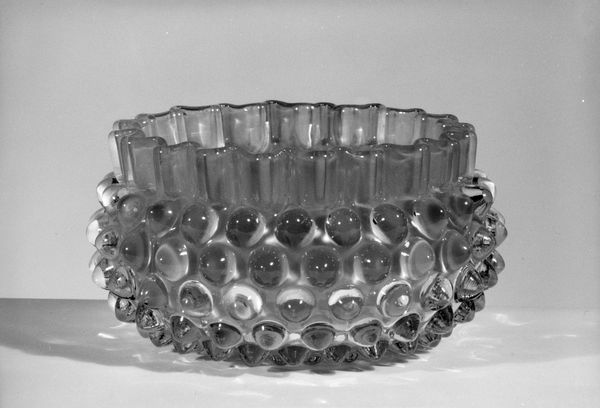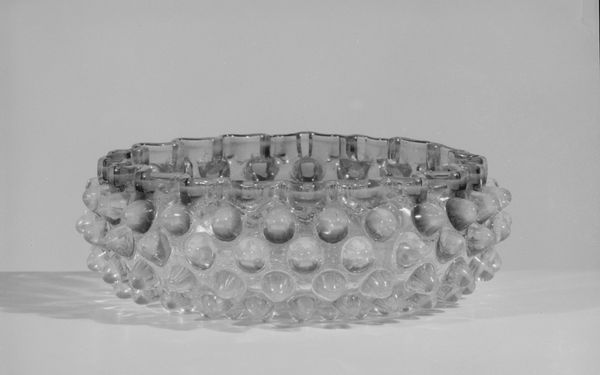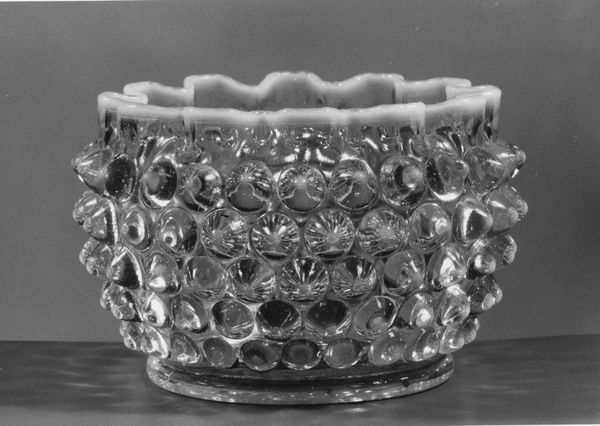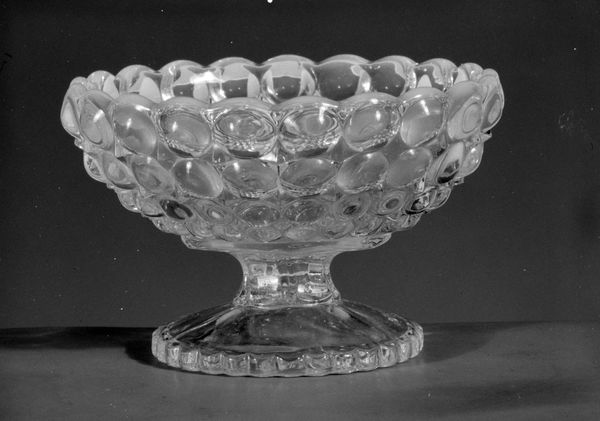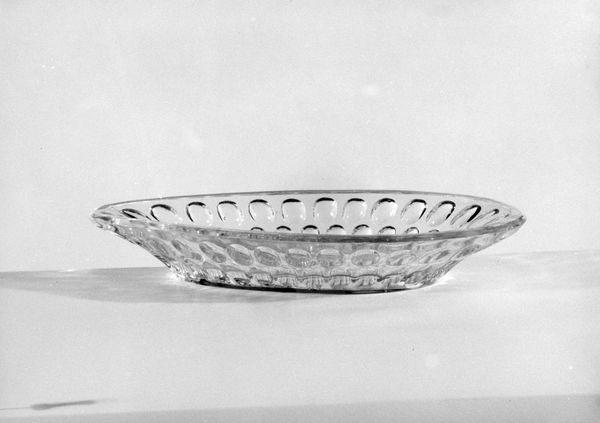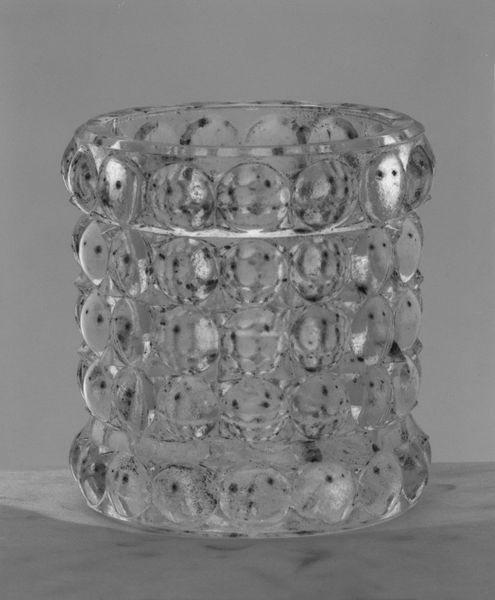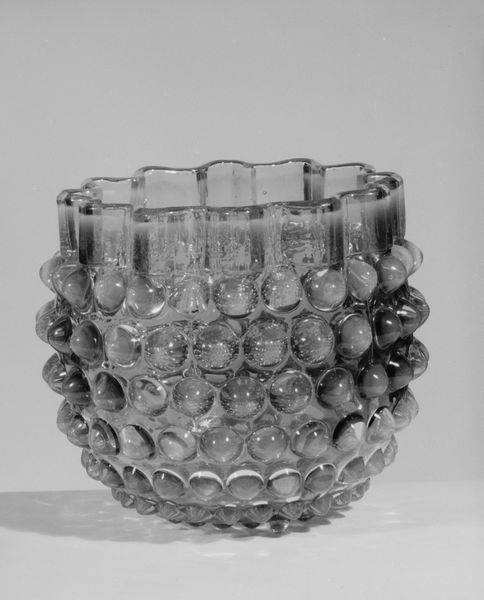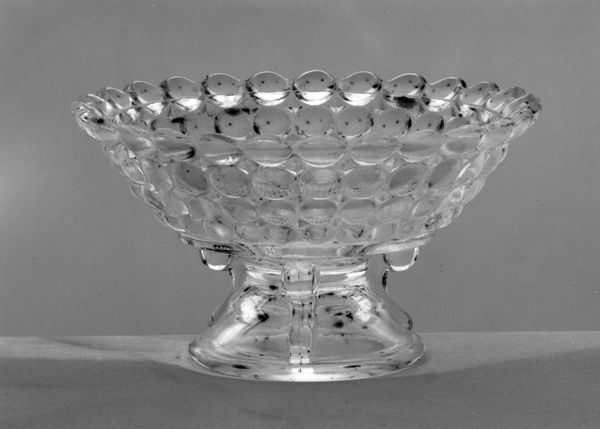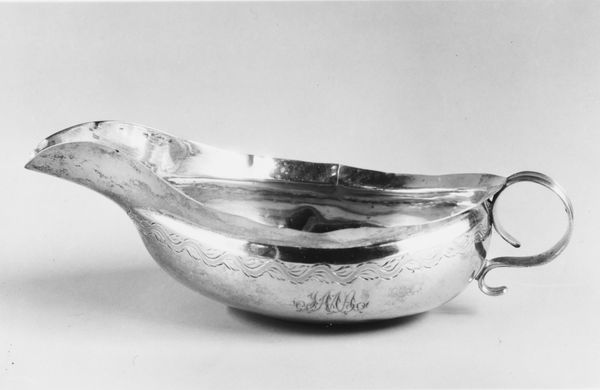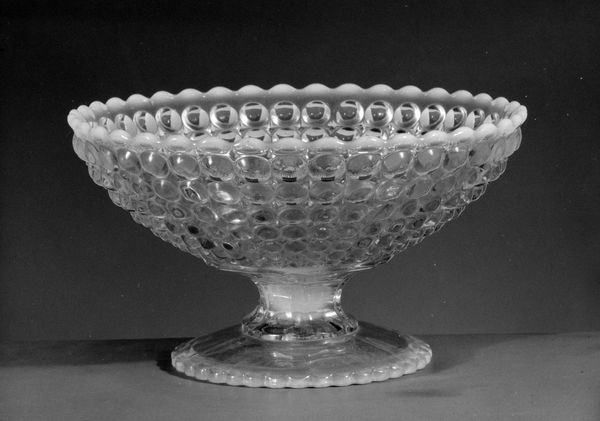
glass, sculpture
#
sculpture
#
glass
#
sculpture
#
united-states
#
decorative-art
Dimensions: 3 3/16 x 8 in. (8.1 x 20.3 cm)
Copyright: Public Domain
Curator: Here we have a beautiful example of late 19th-century American decorative art, the “Hobnail Fruit Bowl”, crafted from glass by Hobbs, Brockunier and Company sometime between 1887 and 1896. Editor: It gives a rather unsettling impression at first glance, actually. All those raised bumps… a texture that begs to be felt, yet promises only prickliness. It's almost architectural, a miniature fortification. Curator: Precisely! Notice the intricate, repetitive pattern. Each hobnail catches the light, creating a play of shadows that alters depending on the viewer's position. There's a delightful visual rhythm. This kind of close, decorative detail speaks to the burgeoning industry during the American Gilded Age. Editor: While I acknowledge its decorative skill, the repetitive hobnail pattern also invokes questions about labor conditions at that time. These were produced on a massive scale for middle-class homes and factories. The skilled artisans were generally white and male, whereas in those days a woman or person of color would never be able to work in that context and develop a sense of craft. The production value is there, however what does the artist have to say with their message and position within their cultural-socio conditions? Curator: A fascinating viewpoint! Though without knowing more about the artist we'd be hard-pressed to consider the political and socioeconomic narratives impacting glass production and consumption. As an object it shows the height of mass-produced artistry; there is such beautiful balance, from the repeating patterns of those hobnails to the gentle curve of its undulating rim. Editor: Its symmetry can symbolize balance and order which can reinforce those oppressive power structures that kept labor so clearly stratified back then. Was this simply a vessel for fruit, or was it symbolic for societal divisions of success during the 1880's? Curator: Perhaps both interpretations can co-exist. What draws me in is the material's very own dichotomy. It appears delicate and fragile. Despite its robust hobnail surface texture and construction it holds weight and value with such elegant presentation, wouldn't you say? Editor: Absolutely. Its rigid architecture somehow makes me want to tear it down... which can also bring to light how art during this time could bring up conflicts from our own emotional state. Thank you for the unique reading, truly. Curator: A pleasure as always. A compelling exchange to underscore the complex dimensions of visual beauty!
Comments
No comments
Be the first to comment and join the conversation on the ultimate creative platform.
